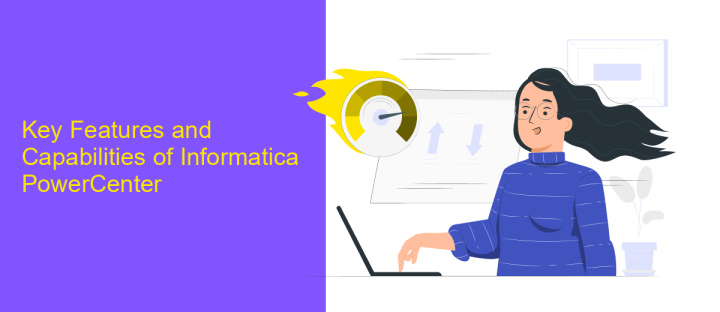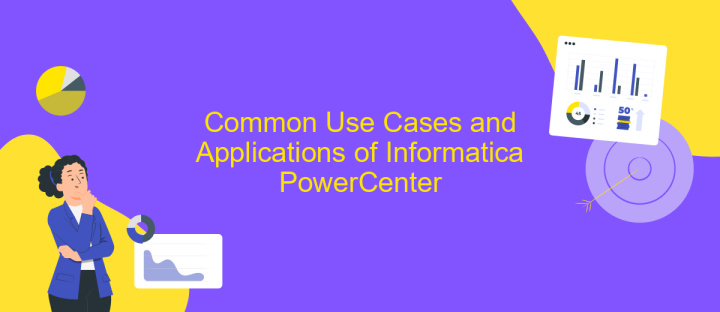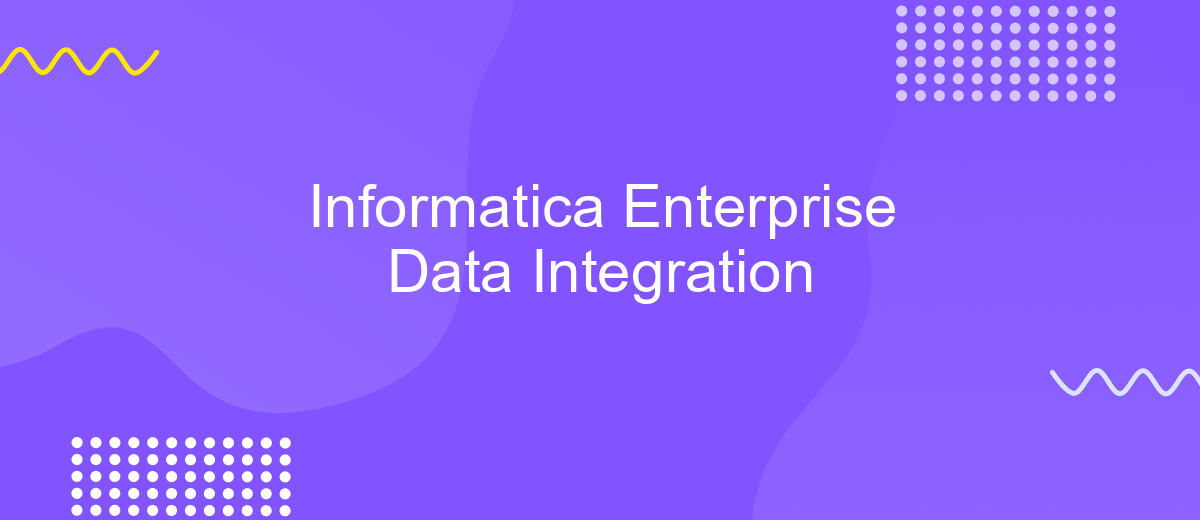Informatica Enterprise Data Integration
Informatica Enterprise Data Integration is a comprehensive solution designed to streamline the process of managing and integrating data across diverse systems. By leveraging advanced tools and technologies, it enables organizations to efficiently handle large volumes of data, ensuring accuracy and consistency. This powerful platform not only enhances data accessibility and usability but also supports informed decision-making, ultimately driving business growth and innovation.
Introduction to Informatica PowerCenter and Enterprise Data Integration
Informatica PowerCenter is a widely recognized enterprise data integration platform that enables organizations to connect, transform, and manage data across various sources. As businesses increasingly rely on data-driven decision-making, the need for robust data integration solutions has become paramount. PowerCenter provides a scalable, high-performance environment for data integration, ensuring that data is consistently accurate, timely, and accessible.
- Comprehensive data integration capabilities, supporting a wide range of data sources and formats.
- Advanced transformation features that allow for complex data manipulations and cleansing.
- Scalable architecture, suitable for both small businesses and large enterprises.
- Robust metadata management, enhancing data governance and lineage tracking.
- User-friendly interface, facilitating ease of use and rapid deployment.
By leveraging Informatica PowerCenter, organizations can streamline their data integration processes, reduce operational costs, and improve data quality. This powerful tool not only supports traditional ETL (Extract, Transform, Load) processes but also offers real-time data integration capabilities, making it a versatile solution for modern data challenges. As enterprises continue to evolve, Informatica PowerCenter remains a critical component in achieving seamless data integration and driving business success.
Key Features and Capabilities of Informatica PowerCenter

Informatica PowerCenter is renowned for its robust data integration capabilities, offering a comprehensive suite of tools to handle complex data management tasks. One of its key features is its ability to connect and integrate data from a wide variety of sources, including databases, cloud applications, and big data platforms. This flexibility ensures that businesses can seamlessly consolidate data from disparate systems, enhancing data accessibility and usability. Additionally, PowerCenter's metadata-driven architecture allows for efficient data mapping and transformation, ensuring data quality and consistency across the enterprise.
Another standout feature of Informatica PowerCenter is its scalability and performance optimization, which cater to both small and large-scale data environments. It provides advanced data transformation capabilities and supports parallel processing, enabling faster data throughput and reduced processing times. Moreover, PowerCenter's user-friendly interface and automation features simplify the management of data integration workflows. For organizations looking to streamline their integration processes further, services like ApiX-Drive can complement PowerCenter by automating data transfers between various applications, enhancing the overall efficiency of data integration strategies.
Common Use Cases and Applications of Informatica PowerCenter

Informatica PowerCenter is a versatile data integration tool widely used across industries for its robust capabilities in handling complex data environments. It enables organizations to efficiently manage and transform data from various sources, ensuring seamless data flow and accuracy. PowerCenter's ability to support diverse data formats and its scalability make it an essential tool for businesses looking to harness the power of their data.
- Data Warehousing: PowerCenter is extensively used for extracting, transforming, and loading (ETL) data into data warehouses, supporting business intelligence and analytics initiatives.
- Data Migration: Organizations leverage PowerCenter to migrate data between systems, ensuring data integrity and minimizing downtime during transitions.
- Data Synchronization: It facilitates real-time data synchronization across various applications and databases, enhancing operational efficiency.
- Master Data Management: PowerCenter aids in consolidating and managing master data, providing a single source of truth for critical business information.
- Data Quality Improvement: The tool helps in cleansing and validating data, improving the overall quality and reliability of organizational data.
In conclusion, Informatica PowerCenter is an indispensable tool for organizations aiming to optimize their data processes. Its wide range of applications, from data warehousing to quality improvement, underscores its importance in the modern data-driven landscape. By leveraging PowerCenter, businesses can unlock valuable insights and drive informed decision-making.
Benefits and Advantages of Using Informatica PowerCenter for EDI

Informatica PowerCenter is a robust and versatile data integration tool that offers significant benefits for Enterprise Data Integration (EDI). It facilitates seamless data movement across various platforms and systems, ensuring data consistency and reliability. PowerCenter’s ability to handle large volumes of data efficiently makes it an ideal choice for organizations aiming to streamline their data integration processes.
One of the primary advantages of using Informatica PowerCenter is its user-friendly interface, which simplifies complex data integration tasks. This feature allows both technical and non-technical users to design and manage data workflows with ease. Additionally, PowerCenter supports a wide range of data sources, enabling organizations to integrate disparate data systems into a cohesive data environment.
- Scalability to handle growing data volumes.
- Robust data transformation capabilities.
- Comprehensive metadata management.
- Enhanced data quality and governance features.
- Real-time data integration support.
Furthermore, Informatica PowerCenter provides excellent data security features, ensuring that sensitive data is protected throughout the integration process. Its ability to automate repetitive tasks and monitor data flows in real-time enhances operational efficiency and reduces the risk of errors. By leveraging PowerCenter, organizations can achieve a more agile and responsive data integration framework.


Future Trends and Developments in Informatica PowerCenter and EDI
Informatica PowerCenter is poised to evolve significantly, embracing future trends that enhance its capabilities in enterprise data integration. With the growing demand for real-time data processing, PowerCenter is likely to incorporate more advanced features for real-time analytics and streaming data integration. Additionally, the integration of artificial intelligence and machine learning algorithms will enable more intelligent data mapping and transformation processes, improving efficiency and accuracy. As cloud adoption continues to rise, PowerCenter is expected to offer enhanced support for hybrid and multi-cloud environments, allowing seamless data integration across various platforms.
Emerging technologies such as API management and automation tools are becoming increasingly relevant in the data integration landscape. Services like ApiX-Drive could play a crucial role in simplifying and automating the integration processes, offering user-friendly interfaces and robust connectivity options. This trend towards automation and simplification will likely lead to more intuitive and accessible data integration solutions, empowering businesses to focus on strategic decision-making rather than technical complexities. Overall, Informatica PowerCenter is set to adapt and innovate, ensuring it remains a leader in the ever-evolving field of enterprise data integration.
FAQ
What is Informatica Enterprise Data Integration used for?
How does Informatica ensure data quality during integration?
Can Informatica integrate data from cloud-based applications?
What are some best practices for implementing Informatica Enterprise Data Integration?
How can automation tools enhance the data integration process in Informatica?
Time is the most valuable resource in today's business realities. By eliminating the routine from work processes, you will get more opportunities to implement the most daring plans and ideas. Choose – you can continue to waste time, money and nerves on inefficient solutions, or you can use ApiX-Drive, automating work processes and achieving results with minimal investment of money, effort and human resources.

